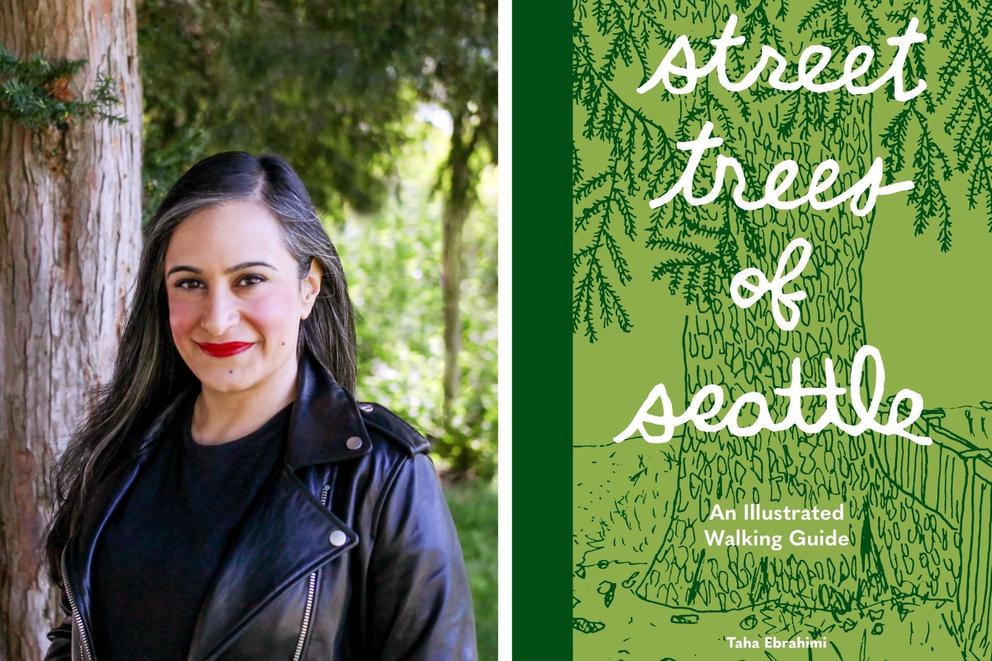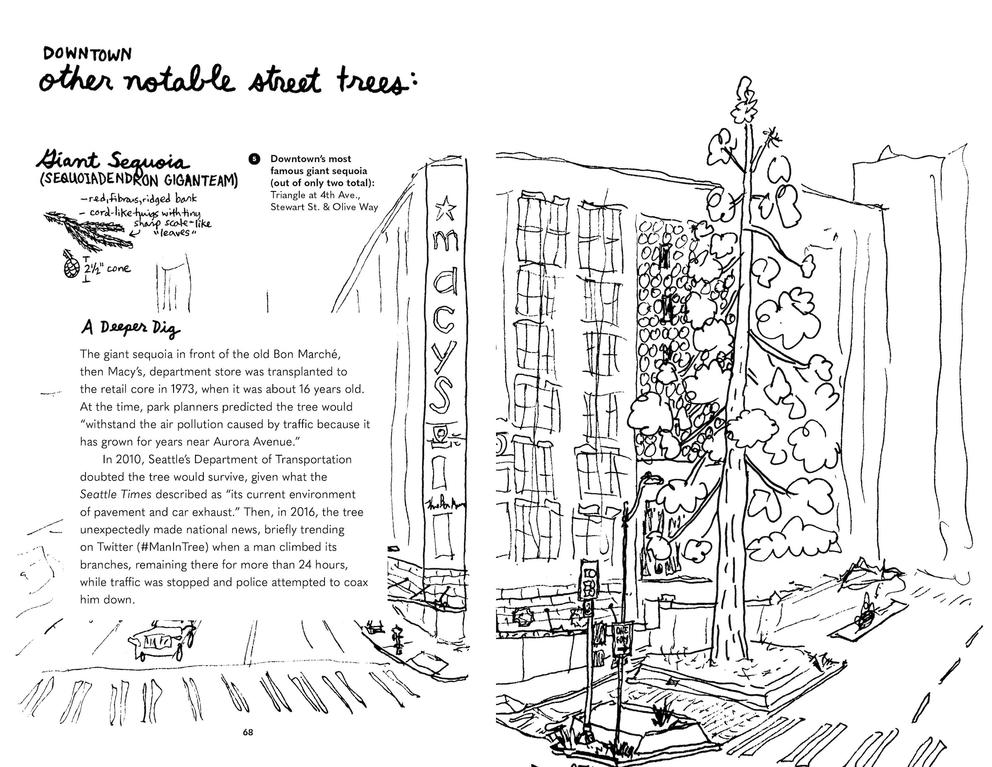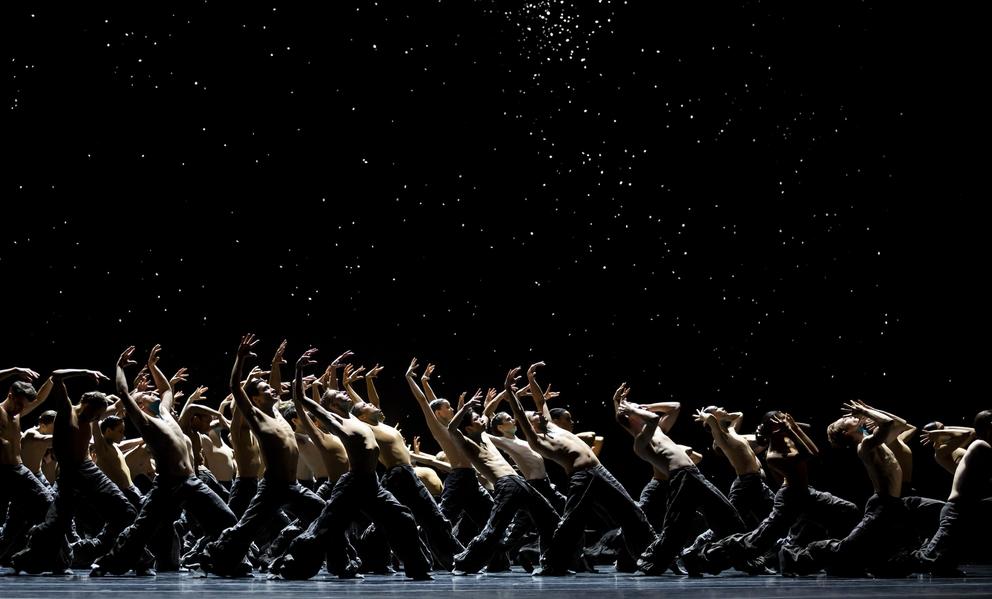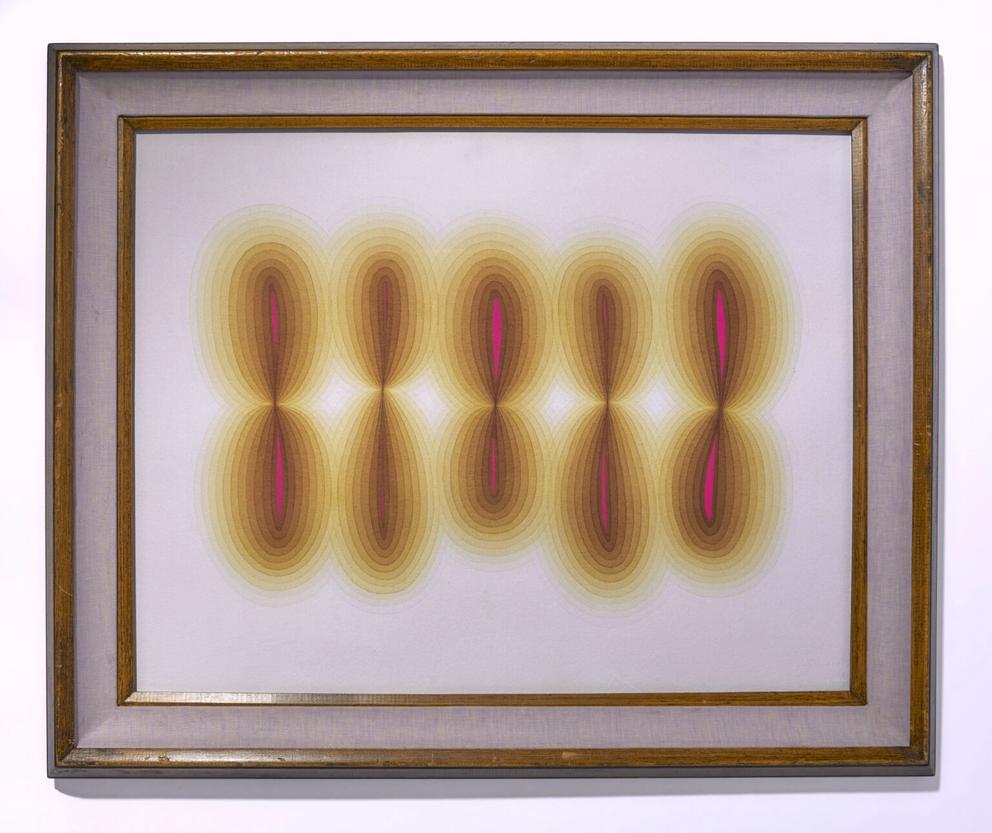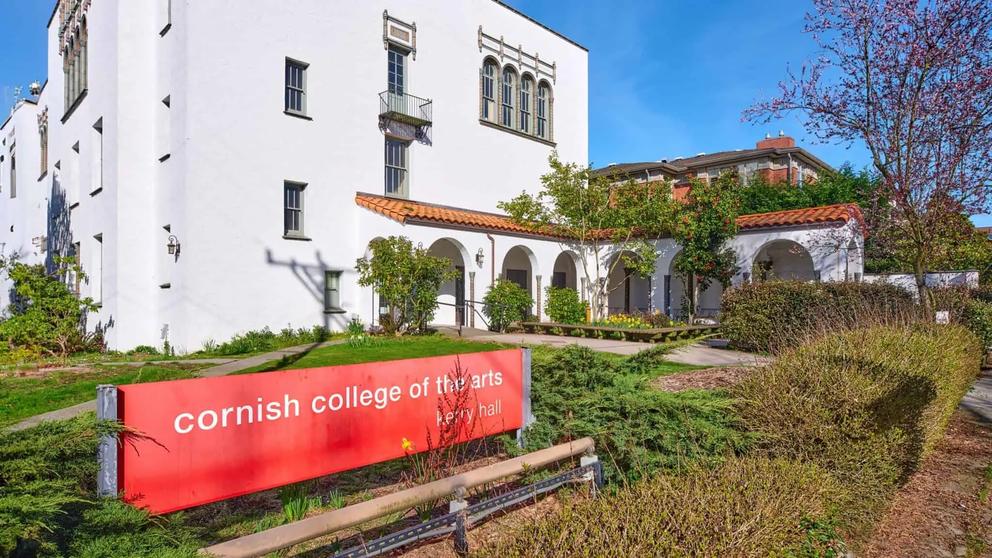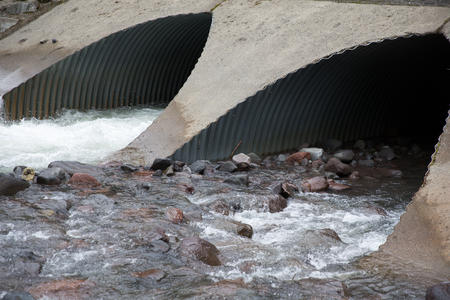Having just released her first book, Street Trees of Seattle: An Illustrated Walking Guide (April 16, Sasquatch Books), the Seattle writer has her head in the trees — and the trees are in her head.
ArtSEA: Notes on Northwest Culture is Cascade PBS’s weekly arts & culture newsletter.
Ebrahimi (a former Crosscut contributor) will be the first to tell you she’s neither an arborist nor an illustrator. Her day job is with data visualization firm Tableau. Yet her deeply researched book is packed with local tree facts — tallest, widest, most populous — and her own lovely drawings of the remarkable “hidden in plain sight” trees that grow in our public right of ways.
A passion project that sprouted from Ebrahimi’s long pandemic walks, the book is sorted by neighborhood and includes maps of significant (and significantly interesting) trees, as well as drawings of leaves, cones and bark to help novice street-tree spotters feel informed on their own strolls.
Trees native to our region include big-leaf maples, oaks and cedars, which Indigenous people relied on for all kinds of uses for thousands of years. But the last original tree in Downtown Seattle was logged in 1879.
Today only 5% of Seattle street trees are native, the plus side being that we have one of the most diverse collections — more than 50 genera — of street trees in the country.
During our Capitol Hill walk (see the video on The Newsfeed), Ebrahimi told me the city’s first street trees were planted in 1859 by Henry and Sarah Yesler: a row of maples outside their home in what’s now Pioneer Square. (Read the book for the grisly story of how an angry mob used the trees.)
Many of our street trees were planted as part of a nationwide “city beautification” trend starting in the late 1800s. Ladies’ garden clubs found that tree planting projects were a way to gain stature in a society that denied them agency elsewhere. (This could go awry: one woman was on a mission to convert Washington into “The Holly State” by way of abundant English holly planting.)
Street trees prove to be a fascinating lens through which to trace Seattle history, but Ebrahimi also emphasizes the vital role of these trees in the health of the environment. Our 28,000 cherry street trees aren’t just spring stunners, for example; they remove four million pounds of carbon dioxide a year.
“These trees have witnessed history,” Ebrahimi told me, as we stood under the city’s second-widest coast redwood street tree. “They’re literally made out of the exhaled breath of the past.”
Hear Ebrahimi talk about her new book at Elliott Bay Books (April 17 at 7 p.m.), Third Place Books Ravenna (April 25 at 7 p.m.) and Third Place Books Seward Park (May 6 at 7 p.m.).
Several years ago I wrote an article about scientists investigating the neuroscience of forest bathing. Most of us feel calmer and more grounded after walking among trees, but what exactly is happening in our brains to make us feel that way?
I’ll refrain from garbling the brain science, but basically, it comes down to shapes. There’s something about human synapses that respond positively to organic geometry like curves and fractals — in contrast to the forced rectilinearity of built environments.
Another way to engage with fluid forms? Go see dance. Specifically, the new mixed bill The Seasons’ Canon at Pacific Northwest Ballet (April 12-21). It’s a short but powerful lineup, and regular ArtSEA readers won’t be surprised to hear that I’m most excited for the eponymous piece by Vancouver, B.C., choreographer Crystal Pite.
My admiration for her work involves road trips to B.C. whenever she premieres a work, and my own slightly obsessive annotation of her signature moves. Watch for birdlike flicks, smooth ripples and murmurations in this eye-popping piece, last performed on the PNB stage in 2022 to rave reviews (including mine).
Set to Vivaldi’s The Four Seasons as “re-imagined” by British composer Max Richter and played live by the PNB orchestra, the contemporary piece features more than 50 dancers and a whole lotta undulating curves and shapes found in nature. As the seasons progress the dancers resemble ocean waves, spring’s floral fling and falling leaves — all with an achingly human undertone.
Also on the bill is Twyla Tharp’s “Sweet Fields,” a flexed-foot ode to Shaker shapes, and Jessica Lang’s poignant piece “The Calling,” which positions a solo dancer at the center of a huge circle skirt, their exposed torso twisting up like the top of a Hershey’s Kiss.
If all this has you craving more curves, you’ll want to check out three visual art shows by longtime local artists that just might inspire more mellow brainwaves.
< At J. Rinehart Gallery in Pioneer Square, Northwest sculptor Jan Hoy is showing a collection of her abstract curlicues in Fluidity (through April 24; artist talk April 13 at 1 p.m.). Working in clay, iron oxide and steel, she creates a pleasing blend of hard edges and organic shapes.
< Also in Pioneer Square, ArtX Contemporary celebrates the 90th birthday of Vashon Island artist Joan Wortis, with Found Forms: Celebrating a Lifetime of Art (through April 20). Her monotypes and accordion-folded textiles resemble cellular bodies and tidepool creatures.
< And at Traver Gallery downtown, former Seattle shop curator and recent Seattle painter Curtis Steiner presents his second show of smooth shapes. Gathering (through April 27) features his remarkable free-hand watercolor paintings that appear to buzz and vibrate in soft pastel clusters.
Arts News Nuggets
< This week Cornish College of the Arts announced it is putting one of its original buildings up for sale: Kerry Hall, built in 1921 and once the home of school founder Nellie Cornish. The Spanish Colonial Revival building is on the National Register of Historic Places and has housed the dance and music programs for decades. The school says selling the building will “unify the campus in South Lake Union,” but judging by the social media response, alumni are outraged by the decision.
< Montlake gets a gallery! Painters and life partners Erik Hall and Amy Spassov have previously run Hall Spassov Gallery out of locations in Bellevue and Pioneer Square. After a six-year hiatus, they built out a sunny new space on 24th Avenue East and East Boston Street (opening for regular hours starting April 16). Check out their diverse array of represented artists in the opening group show.
< And in the department of horn-tooting: Last week our Black Arts Legacies project was nominated for a Northwest Emmy Award. Congratulations to filmmaker Tifa Tomb and team, whose profile of local actor and playwright Reginald André Jackson earned the nod. (Watch the video here … and watch for Jackson in the upcoming production of Fat Ham, the Pulitzer Prize-winning Hamlet adaptation, at Seattle Rep, April 12 - May 12.)
Consider this your gentle reminder that Black Arts Legacies Season 3 kicks off in just over a week! Sign up for the BAL newsletter to receive the weekly reveal of 10 artists included in this year’s mix.
Get the latest in local arts and culture
This weekly newsletter brings arts news and cultural events straight to your inbox.

